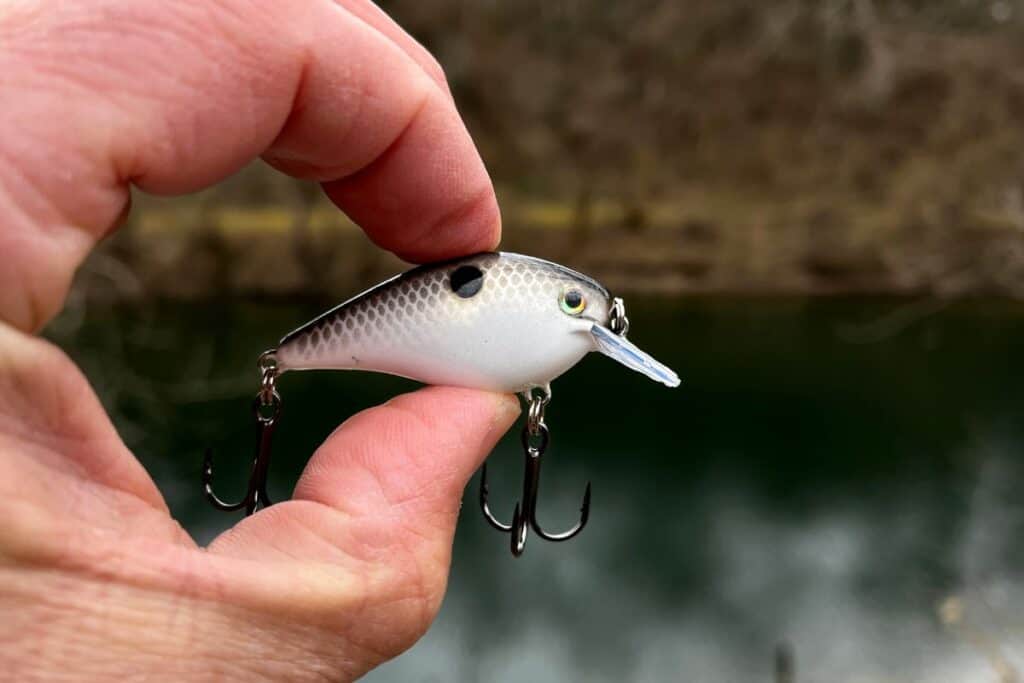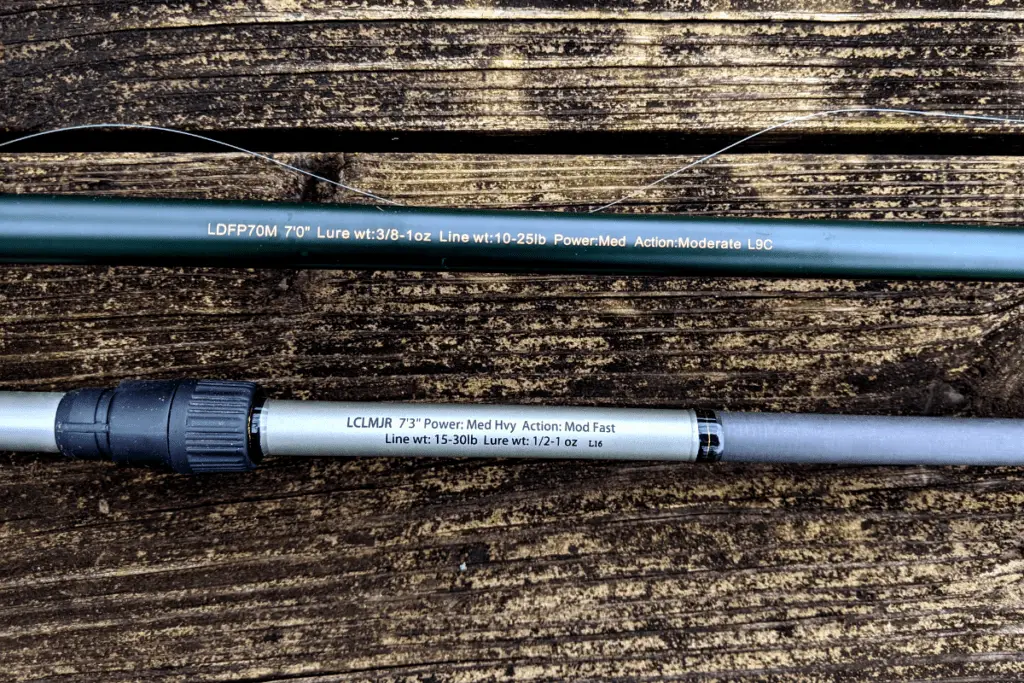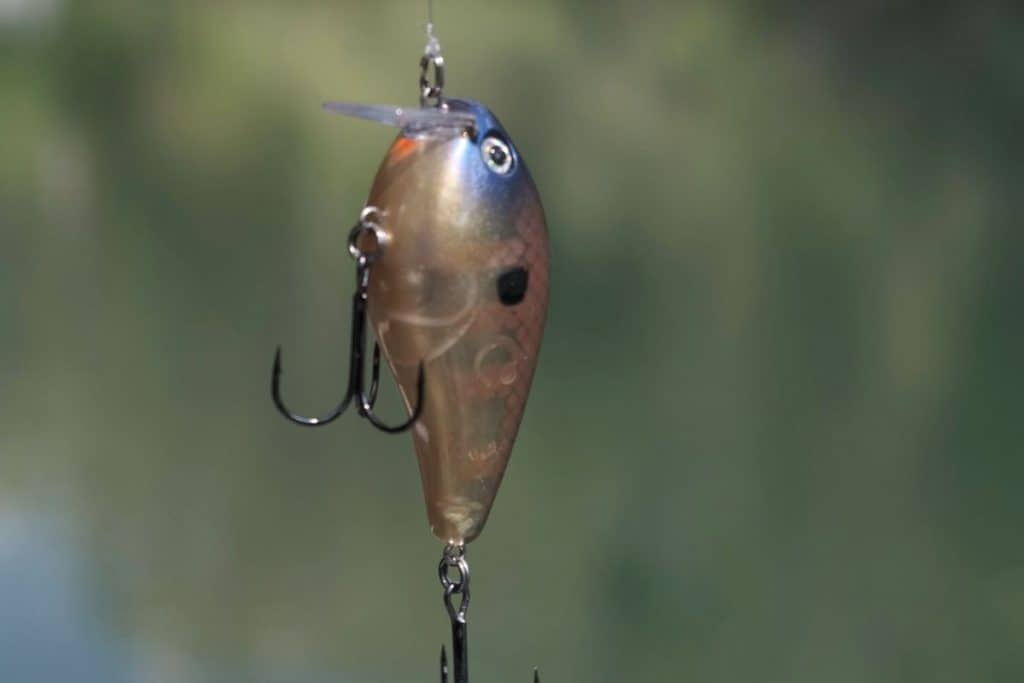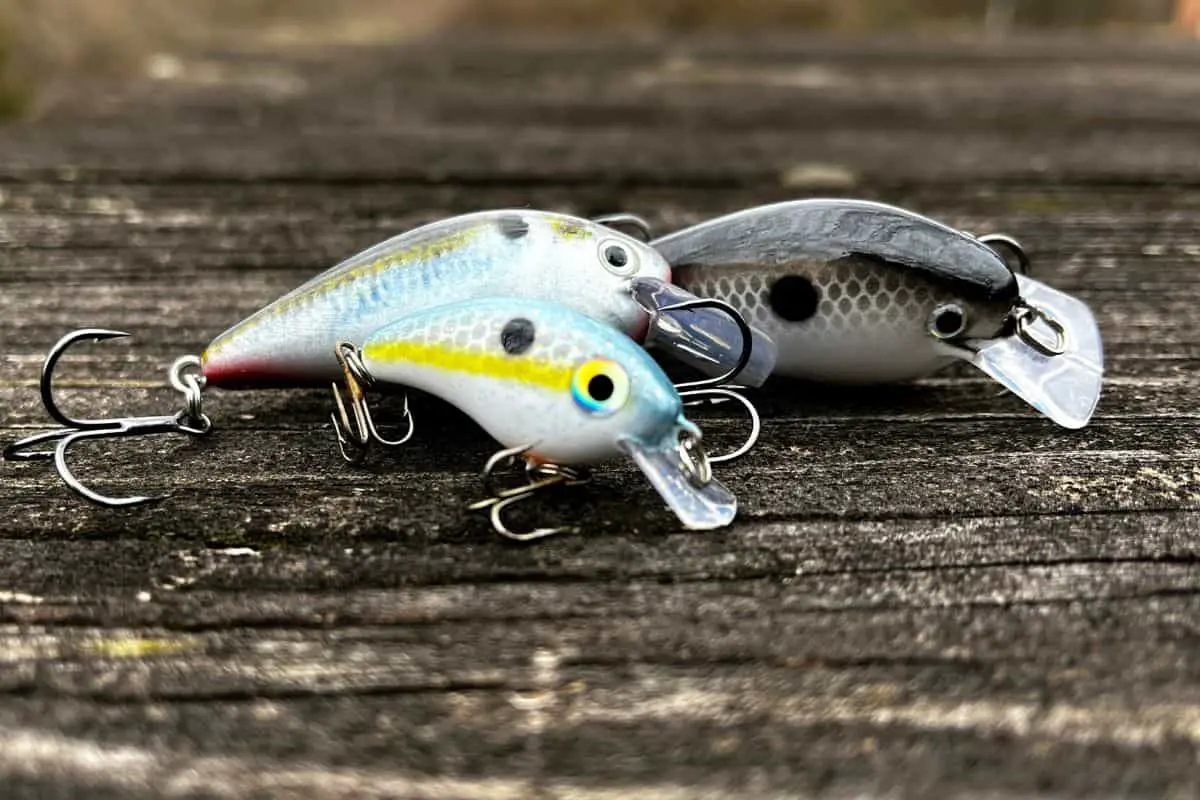Crankbaits are excellent lures for locating and catching bass. Shore anglers often shy away from using crankbaits because these lures often get snagged. The right lure and presentation can minimize this issue.
Shore anglers using crankbaits should utilize smaller lures that are buoyant. The presentation should also focus on slower deflections and bounces instead of burning lures. Hooks can also be modified to help eliminate snags.
Each time an angler goes bass fishing the first goal is to find fish. Crankbaits excel at that and understanding the best way to use one from shore is key to success.
Best Crankbaits for Shore Fishing
In most situations, we can immediately eliminate deep diving crankbaits that reach a depth of 10+ feet. Unless anglers are confident that the waters they are fishing are free of snags, these bigger lures are a recipe for frustration.
That’s OK. There are plenty of options so bank anglers can be successful with crankbaits.

Tiny Cranks for Finding and Catching Bass
Small crankbaits excel at locating and enticing bass to bite.
There are ultra-small versions like the popular Strike King Bitsy Pond Minnow as well as lures that are slightly larger.
I prefer squarebills in that Series 1 or the KVD Series 1.0 size range. These lures are small enough to patrol the skinniest water, yet still, dive deep enough to hit up to the 4ft range when using the right presentation.
Below is a table of popular tiny crankbaits.
| Lure Model | Length in Inches | Weight in Ounces |
| Bagley Honey B | 1 1/2″ | 1/4 oz |
| Strike King Bitsy Pond Minnow | 1 1/4″ | 1/8 oz |
| Strike King KVD 1.0 | 2″ | 1/4 oz |
| Strike King Series 1 | 2″ | 3/8 oz |
| Rapala Ott’s Garage Tiny 4 | 2 1/4″ | 5/16 oz |
| Chubbs Lures Shallow Squarebill | 2″ | 1/4 oz |

While most small crankbaits are floating models, it is always best to double-check the packaging and confirm it. Sinking crankbaits are a nightmare for anglers fishing from the bank.
(Here is an article that goes into depth on small crankbaits.)
Floating Jerkbaits for Shore Anglers
This category of lure seems to be forgotten by most bass anglers.
When we hear the term “jerkbait” we think of the hard-suspending models that can dive as deep as 12+ feet.
Floating jerkbaits run in skinnier water and are very effective for shore anglers. The natural buoyancy also gives us the opportunity to let the lure float to the surface. We can then slowly pull the bait over anything that might cause some serious snagging issues.
For decades the Rapala Floating Minnow was the gold standard in this category. A nice collection of balsa or plastic floating jerkbaits should be in every shore angler’s collection.
The Presentation for Fishing Crankbaits From the Shore
Bottom composition varies tremendously and shore anglers need to first consider what is in front of them.
Is there a lot of cover like brush and weeds? Does the bottom composition mainly consist of rock and if so, what size is it? How fast does the lake or river bed drop off into deeper water?
When there is shallow water or lots of debris, be sure to keep the rod tip up and adjust it based on where the lure is and what type of cover it is coming through. As the water drops off, lower the rod tip.
Instead of the burning presentation that is so popular with squarebills, shore anglers should focus on crawling and deflecting off the cover under control. The sudden change of direction will still draw reaction strikes from bass, but the slower speed will keep the hooks from burying up into something that refuses to let go.
If there are portions where you can bring the lure back quicker and burn it, then definitely give it a try, but have confidence in the slower, crawling retrieve as well.
When you approach a piece of cover that looks problematic or is sitting high in the water column, pause the lure right before you get to it. The buoyancy of these small cranks and floating jerkbaits will allow the lure to rise to the surface before you get to the potential issue. Once the lure is on top, raise the rod tip and pull or pop the lure over the cover. Then you may continue with the retrieve.
As far as the hookset, just maintain weight. There is no need to use a massive hookset like when using a jig or Texas rig. A side sweep hookset that maintains pressure is always a good choice wherever you fish crankbaits.

Rod Choice for Shore Fishing With Crankbaits
Having a true crankbait rod can make a huge difference. This is always the case with crankbaits, but it is quite noticeable when fishing from the shore.
A true crankbait rod is going to be a composite blank with lots of parabolic action. This give is designed to keep the lure from ripping free from the mouth of a fish, but when shore fishing it also helps us to not bury the hooks deep into wood.
A stiffer action rod will transfer more energy to the lure and the odds of a hangup that cannot be retrieved go way up.
There is a fine balance between rod lengths when using small crankbaits. While shorter models under 7ft allow for more control when fishing around shoreline hazards like trees and bushes, the slightly longer model will help you control the lure more during the presentation.
When possible, I like to use a 7ft crankbait rod for my smaller lures.

Hook Size When Fishing Crankbaits from the Shore
The natural design of a crankbait uses the bill of the lure to deflect off cover and keep the hooks from snagging.
When retrieved properly, this works quite well.
If you are still leery about getting stuck, reduce the size of the front treble by one. For example, if the lure you are using has #4 hooks on it, switch out that front one to a #6.
The back hook naturally sits higher in the water column and is less of an issue, but anglers can always switch them both out.
I also would suggest using a shorter shank treble. This allows more of the hook to be protected by the bill of the lure.
How to Handle Snags When Fishing Crankbaits from the Shore
It is inevitable that you will get a crankbait stuck at some point.
The first part of eliminating this issue involves the actual retrieve. Reel carefully and under control. If you feel something hard, like a rock or piece of wood, then you have two options. First, you can stop reeling and let the lure float up as mentioned earlier, and then swim it over the top. The second option is to crawl the lure through the cover. Trust that the bill is doing its job of protecting the hooks.
Raise the rod tip to let the lure work higher in the water column. Hitting an object in its top half is more likely to see the lure work over the top of it than smashing into the bottom of the object where the lure can get wedged between it and the lake bed.
If you have been throwing the lures parallel with the shoreline, the odds of getting the lure back are good. Walk past the lure if possible and it will likely float up once the pressure is released. When the lure still is stuck, give it a small tug while on the down side of the object. If you don’t bury the lure at a high speed or with a strong hook set, it will often pull free.
When fishing straight out from shore, perpendicular, with crankbaits, getting the lure back can be a little tougher.
First, make sure that you are crawling the lure and then pause when you feel a snag starting. The lure may still float up and over the object, especially if it is rock.
If it doesn’t, then use the bow and arrow technique to attempt to retrieve the lure.
Raise the rod tip until the line is taught, but not super tight. Then take your other hand and grab the line up the rod a bit. Raise the line and then let it snap as you twitch the rod tip slightly. This will often “throw” slack in the line and fire it down towards the lure. Many times it will pop the lure free. Several snaps may be needed.
Picture a garden hose laying in a yard. If you pick up one end of it and then snap your arm up and then down it will create a parabolic curve that will travel the length of the hose. You are attempting to do the same thing.
Good luck and be sure to encourage someone today. You never know how you may change their life forever.
Isaiah 6:8

